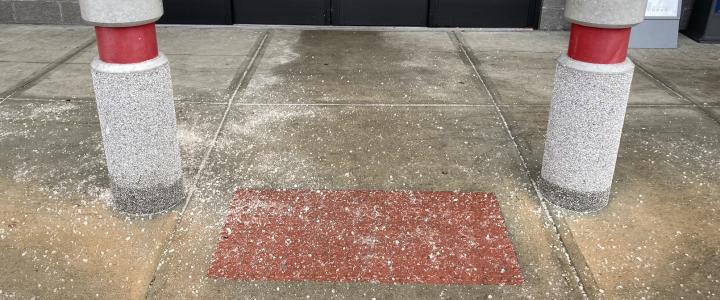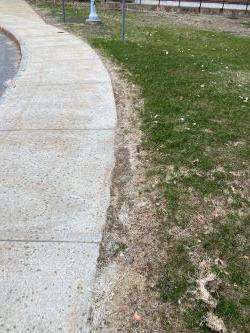
The Unintended Impacts of Winter Deicing Salt
As the final leaves of autumn fall to the ground, colder temperatures remind us that winter weather is approaching. Winter deicing salt, sodium chloride (NaCl), applied to roadways, parking lots, and sidewalks becomes a familiar sight during the next several months. Salt is applied to melt ice and keep drivers and pedestrians safe. However, the improper and over-application of salt that is commonly observed has detrimental impacts on the environment and infrastructure, creating hidden and permanent costs in this seemingly affordable deicing material.
Chloride pollution in ground and surface waters is a significant issue in New Hampshire. There are currently over 50 waterbodies in the state that have chloride impairments with levels exceeding standards set by the U.S. Environmental Protection Agency (USEPA). Runoff laden with salt ends up in nearby rivers, lakes, ponds, and streams, elevating chloride levels, which disrupts aquatic ecosystems harming plants, fish and wildlife. Elevated chloride levels can contaminate the drinking water supply of individual homes and public water systems in New Hampshire. Chloride is a permanent pollutant that is not removed by plants, and desalinization is impractical and costly. Preventing chloride contamination through implementation of best management practices is the most cost-effective and environmentally sound option.

Impaired surface and groundwater quality are not the only consequences of improper use of winter salt. Vegetation along roadways and adjacent to parking lots and sidewalks falls victim to the bounce and scatter of dry rock salt that travels beyond the pavement. Vegetation can be stunted and even killed, which leads to erosion of soils and loss of expensive landscaping investments. Winter salt also contributes to extensive damage to vehicles and infrastructure. Winter salt applications corrode vehicles, bridges and building entranceways impacting longevity and structural integrity, creating unforeseen costs to repair or replace critical infrastructure essential for ensuring public safety.
To mitigate the long-term impacts of salt on the environment and infrastructure, and the associated costs to remedy it, sustainable winter salt application practices must be adopted by private, commercial, municipal, and state sectors that manage roads, parking lots, and sidewalks. The implementation of salt reduction best management practices such as pre-treatment, equipment calibration, route optimization, and much more, is essential. The NHDES Green SnowPro Program offers snow and ice management professionals training and certification in salt reduction practices that prioritize public safety while mitigating salt use. In return for their efforts, commercial salt applicators certified by NHDES Green SnowPro and property owners or managers who hire them, are granted limited liability protection against damages arising from snow and ice conditions. Find a Green SnowPro certified contractor to hire this upcoming winter season and learn more about New Hampshire winter salt reduction efforts and resources by visiting the Green SnowPro Road Salt Reduction site.




